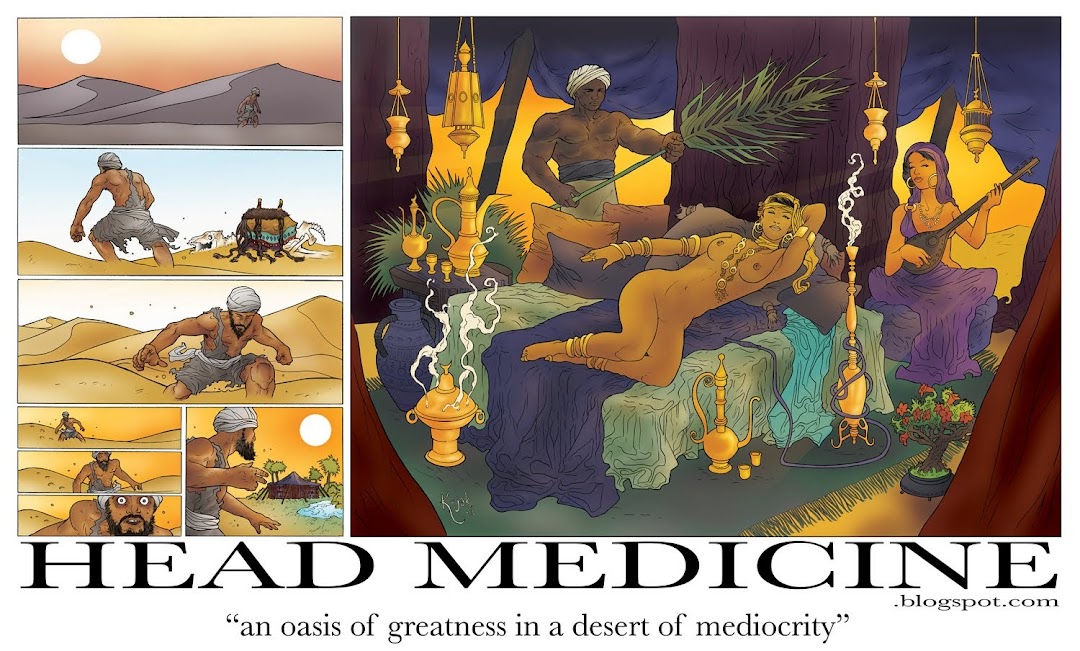Thursday, May 28, 2015
Milo Manara does Marvel
Milo Manara, the legendary French erotic comics master, unwittingly found himself at the center of a heated debate on the oversexualization of women in American comics with his infamous Spider-woman cover. Manara did what he has done best over his decades-long career, seductive women in provocative poses, and the internet broke as a result. His other Marvel covers were cancelled in the wake of the outrage. America is still a place with rigid Puritanical views on sexuality, yet openly flaunts death and destruction in every available medium, and Manara's work simply doesn't jive with these sensibilities. It is unlikely we will ever see the Master's work published through mainstream comics on this side of the ocean again, so here is a collection of his Marvel covers, as well as some pages from his 2010 graphic novel, X-Women, written by Chris Claremont (download a Spanish copy HERE, for scholarly review of course).
Labels:
art,
classic,
comic art,
comics,
erotic,
erotic comics,
french comics,
milo manara
Thursday, May 21, 2015
1830s animation with the Phenakistoscope
Forty years before the advent of motion pictures, and eighty years before the development of modern animation, creative minds were already attempting to make a series of static images magically move for an audience. One of these earliest pioneers was Belgian inventor Joseph Plateau, who created the Phenakistoscope in 1831. His device used images on a spinning wheel that, when looked at through a slit onto a mirror, created the optical illusion of movement. The phenakistoscope was considered a novelty or a child's toy at the time, since only one viewer at a time could look through it, but the basic formula for motion pictures was officially in place. in 1871, Eadweard Muybridge would use a series of successive photos to make the first movie, "The Horse in Motion," and in 1914, Windsor McCay would become one of animations most prominent pioneers with "Gertie the Dinosaur." The work of Plateau helped pave the way.
Richard Balzer has been compiling and digitizing many of these early phenakistoscopes into GIFs, as well as other early animation devices like zoetropes, fantascopes, and thaumascopes. Without his effort, this art form would likely have passed into the ether. please go to his website HERE and his Tumblr HERE to see more and to gather more information.
Tuesday, May 19, 2015
The Rolling Stones - "We Love You" (1967)
August, 1967. After months of serious legal problems stemming from the Rolling Stones' drug bust at Redlands, Keith Richards and Mick Jagger were out on bail and their drug charges were overturned. The band was working on Their Satanic Majesty's Request, and, as a thank you to the fans for their unconditional support through their legal issues, released "We Love You" as a single, with uncredited backing vocals by John Lennon and Paul McCartney.
While Their Satanic Majesty's Request still stands as thee most controversial Stones album among fans, often written off as a half-assed attempt to keep up with the Beatles' Sgt Pepper's, "We Love You" is clearly the band's masterpiece from their brief psychedelic era.
The track starts off with the clanging of keys and jail cell doors before Nicky Hopkins' piano pounding starts in. Soon, waves of droning, blissed out psychedelic noise washes over everything. It's a cacophony of Charlie Watt's pounding drums, Brian Jones' surging Mellotron and horns, and Richards' damaged guitar sounds while Jagger, Richards, Lennon, and McCartney swoon "Weeeeeeee Loooooooovvvvveeee Yoooooooouuuuuuu" over it all. (Allen Ginsberg was in the studio during the recording of the vocals with Lennon and McCartney, the first collaboration between the two bands, and later said "They looked like little angels, like Botticelli Graces singing together for the first time.")
The band would never sound this confidently experimental ever again, and after Their Satanic Majesty's Request, the psychedelic overtones were ditched in favor of the stripped-to-the-bones sound of Beggar's Banquet a year later. "We Love You" is still a mesmerizing piece of music after nearly 50 years, and still stands as one of the Rolling Stones' hidden jewels.
here's a promotional film from 1967. Scenes of the band recording Their Satanic Majesty's Request are intercut with images of Richards, Jagger, and Marianne Faithful re-enacting the Trial of Oscar Wilde.
Labels:
classic,
daily dose,
the beatles,
the rolling stones
Subscribe to:
Posts (Atom)


















































